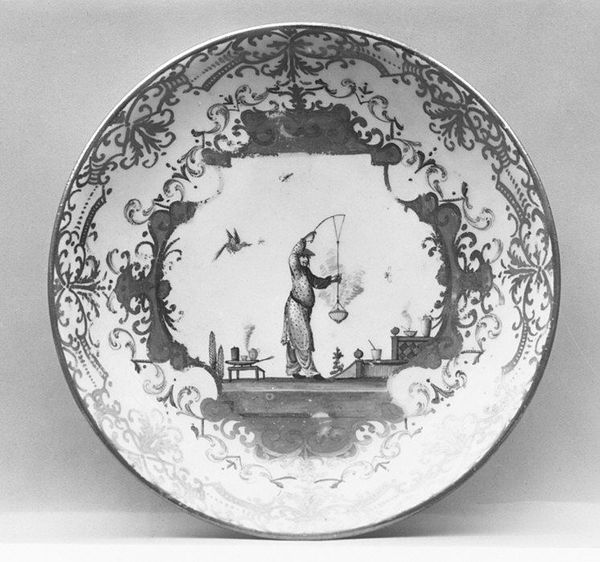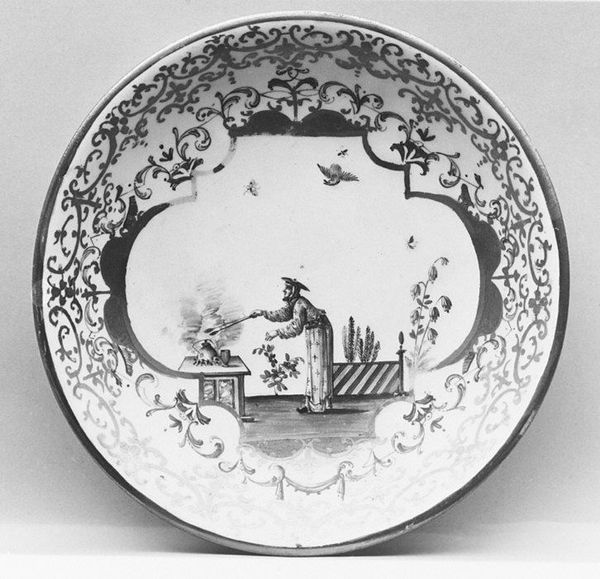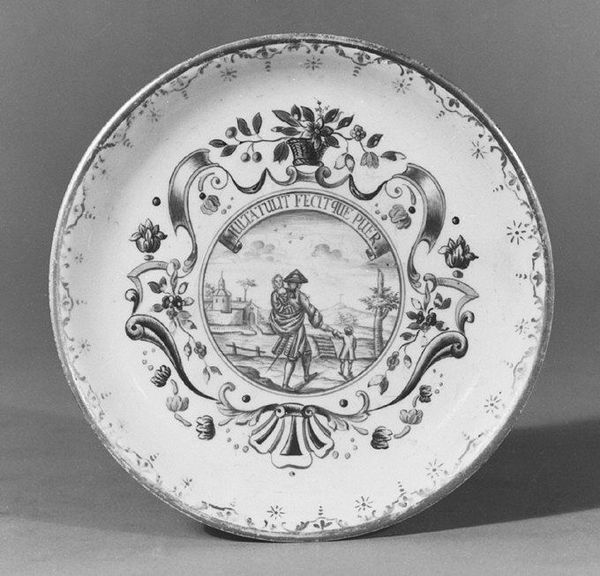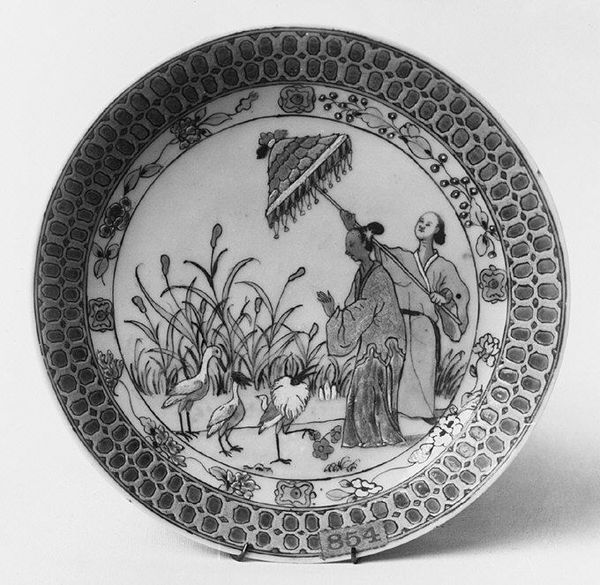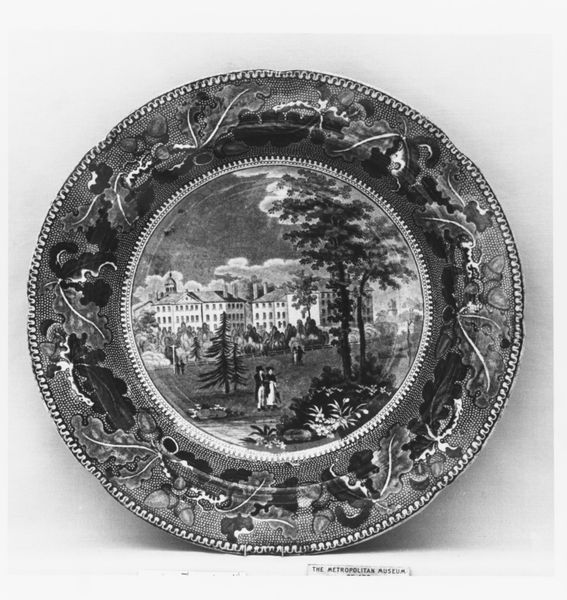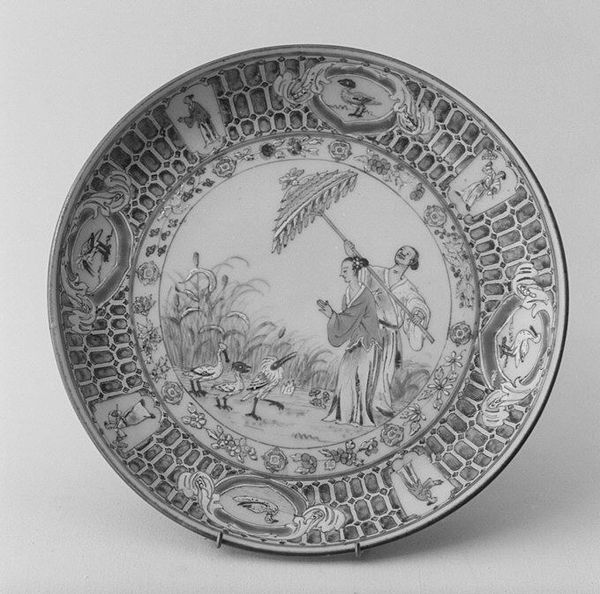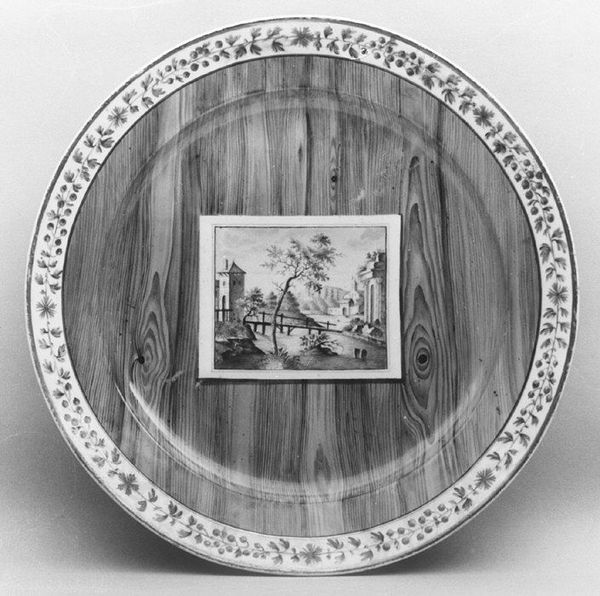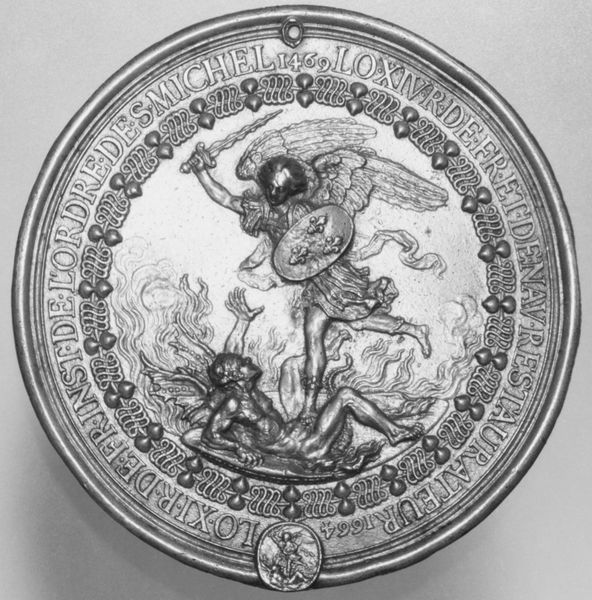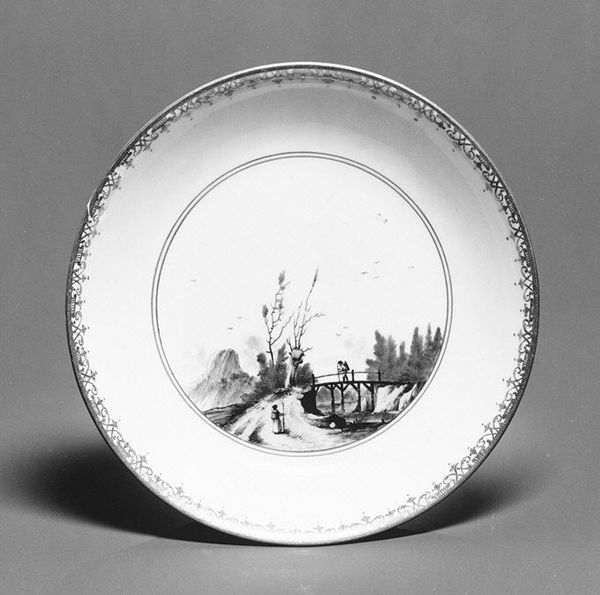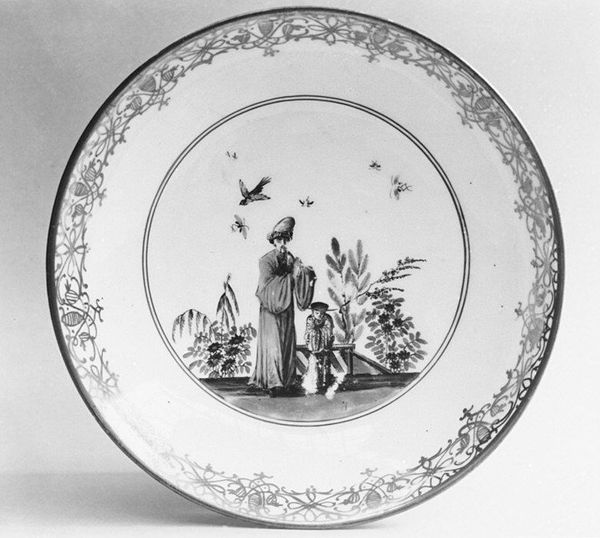
ceramic, porcelain
#
asian-art
#
landscape
#
ceramic
#
bird
#
porcelain
#
figuration
#
black and white theme
#
decorative-art
Dimensions: Overall: 1 × 6 11/16 in. (2.5 × 17 cm)
Copyright: Public Domain
Curator: This porcelain dish, created by Cornelis Pronk sometime between 1730 and 1740, is quite striking. It’s currently held at the Metropolitan Museum of Art. Editor: Oh, immediately, I sense a world held in check – contained by the frame, but full of yearning. That monochrome palette...it really makes you focus on the line work. Almost dreamlike. Curator: The design, with its figures in a landscape of reeds and cranes, exemplifies Asian influences which Pronk, and others at the time, integrated into decorative art for a European audience. Editor: Yes, but filtered, right? The cranes, traditionally symbols of longevity and grace, are caught in a sort of stylized dance, yet there’s something faintly theatrical about it all. Almost as if the artist is looking at the culture as if behind glass. Curator: It was precisely that "looking" that fueled the popularity of chinoiserie at the time – a fascination that was not always rooted in deep understanding, perhaps more like curio collecting. It does have such a wonderfully elaborate border. I almost missed the other creatures that are represented in that. Editor: That’s interesting. To me, the border amplifies this feeling. Those repeating geometric patterns almost feel like bars. It really makes the eye dart around, constantly searching for something outside the set of rules of the scene in the center. Does the repetition emphasize this exotic feeling? Curator: Very possibly. I think it underscores that artificiality you mentioned. Consider the umbrella too, sheltering this elegant figure - almost isolating her. All enclosed within this small circular world. The light and dark shading makes it difficult to perceive what emotions she may be experiencing. Editor: Exactly, the parasol creates that sort of visual paradox. This dish, although functional, becomes something more...a tiny stage set. Each figure and flourish perfectly placed. Curator: Looking at it, I see it's more than just pretty. It is a moment in time, suspended in monochrome. It definitely leaves one reflecting about the perception of Asian culture and integrating symbolism into design at the time. Editor: And that’s it for me – this image continues to spark those bigger thoughts. Every mark is intentional, leaving me with this lingering question: What is it *really* trying to tell us about ourselves, and our perceptions?
Comments
No comments
Be the first to comment and join the conversation on the ultimate creative platform.
